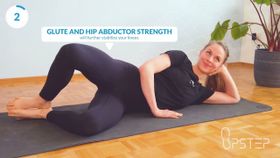Best Exercises to Treat Bunions and Relieve Pain
Updated December 18, 2024

A bunion (medically called hallux valgus), simply refers to the bony bump that forms on the outside of the big toe. This foot deformity usually develops from years of repeated pressure on the joint of your big toe—the metatarsophalangeal (MTP) joint.
While bunions usually occur at the base joint of the big toe, there are times when one might also find them near the base of the little toe instead. These are known as bunionettes or tailor's bunion. A bunion is also progressive, and, if left untreated, could lead to even more problems, such as:
- Worsened pains (burning sensation)
- Stiffness
- Hammertoes (painful, tight toe tendons and joints)
- Corns or calluses
Although a family history of foot structure deformities like flat feet is the most common risk factor for bunions, there are many other causes of bunions as well, including foot injuries and inflammatory diseases like rheumatoid arthritis. In this article, we look at the benefits of foot exercises for bunions, the types of exercises, and how long it takes for a bunion to heal.
The Benefits of Foot Exercises for Bunions
Foot aches that come with bunions will likely discourage physical activity, and less activity can be detrimental to one's overall health. This makes it even more important that one finds a way to relieve the pains attached to bunions, which is where foot exercises come in.
Of course, foot exercises will not get rid of bunions due to the fact that it is a biomechanical deformity. However, foot exercises are highly recommended as a bunion treatment as they are beneficial in helping to relieve the pains associated with bunions and improve flexibility. Furthermore, these foot exercises help in slowing down the progression of your bunion—keeping the rest of the foot movable—while also strengthening the muscles controlling the big toe.
Toe Stretches for Bunions
Stretching out your toes will somewhat help keep them readily bendable and get rid of foot pain. To stretch your toes, follow these steps:
- Point your toes straight ahead for 5 seconds
- Curl them under for 5 seconds
- Repeat the procedure 10 times
Toe stretches can be particularly beneficial to you if you also suffer from hammertoes or other misalignment conditions.
Flexibility Exercises for Bunions
Flexibility exercises are usually carried out to flex and stretch the muscles of the toes. Under this category, two methods will be discussed. The first method is as follows:
- Press and hold your toes against a hard surface like a wall for at least 10 seconds
- Repeat the exercise 3-4 times
- Now flex your toes in the opposite direction and hold that position as well for 10 seconds
- Repeat the exercise 3-4 times
Another exercise that achieves this is called "picking the marbles," which involves picking up marbles or stones with your toes. This is simply done by placing marbles on the floor and using your foot to pick them up one by one, placing them in a bowl in front of you.
Strengthening Exercises for Bunions
Walking barefoot on the beach and doing the heel raise are the best strengthening exercises.
With barefoot beach walking, it's as easy as it sounds. If you have a beach around you, simply visit it and walk around barefoot in the sand for a while. It will feel like a foot massage but will help a great deal in strengthening the muscles in your feet and toes.
The heel raise, however, involves the following steps: 1. Be in a sitting position and place your foot flat on the floor 2. Lift your heel and put most of the weight toward the outside of the ball of your foot 3. Hold for 5 seconds and place back on the floor 4. Repeat 10 times on each foot
How Long Do Bunions Take to Heal?
As mentioned earlier, the only way to permanently get rid of a bunion would be correction surgery.
No two people are exactly the same and it's the same with recovery. Again, recovery is dependent on a lot of other factors like the severity of the bunion, underlying health issues, the procedure undertaken, and how well you follow instructions.
However, it will take an average of six to twelve weeks for the bones to completely heal and for residual pain or swelling to disappear.








